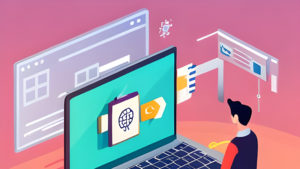What Educational-Neuroscience Says About Code-Switching

Table of Contents
Introduction
What is Code-Switching?
Code-switching is when a person switches between two or more languages, dialects, or language varieties in one conversation. It is a common linguistic occurrence among people who are bilingual or multilingual that despite popular believe is nothing to worry about. While code-switching comes with some challenges, it is more often a valuable skill that helps people communicate better and build bridges between different cultures and communities. Code-switching can involve utilizing entire sentences, phrases, and borrowed vocabulary from a different language.
What is educational-neuroscience?
Educational neuroscience is an intermediary field where neuroscience and education come together. It studies how our brain learns and remembers things, helping us understand how certain teaching methods can be more effective. This field also looks at how education changes our brain over time. It aims to integrate knowledge from neuroscience into educational practices. By doing so, Educational Neuroscientists hope to better tailor teaching methods to how our brains process and retain information.
The relevance of studying code-switching from an educational-neuroscience perspective.
Educational neuroscientist study code-switching to gather new insights into how the brain processes and learns languages. Research has shown that code-switching can have cognitive benefits for bilingual individuals. It was found that people who code-switch have an increased cognitive flexibility and executive function. Additionally, studies have investigated the neural response elicited during code-switching and found that it can affect early access to meaning. Overall, studying code-switching from an educational-neuroscience perspective can help us understand how to teach and learn languages more effectively, as well as how to build bridges between different cultures and communities.
Basics of Code-Switching
Different types of code-switching
While the act of switching between languages is subtle and fluid, not all code-switching is the same. Linguists have categorized the phenomenon into three primary types to have a deeper understanding of its dynamics. These categories are: inter-sentential, intra-sentential, and tag-switching:
- Inter-sentential: This occurs when a speaker alternates between two languages or dialects between sentences..
- Intra-sentential: This occurs when a speaker alternates between two languages or dialects within a sentence.
- Tag-switching: This occurs when a speaker alternates between two languages or dialects by inserting a word or phrase from another language into a sentence.
The reasons people code-switch: sociolinguistic, psycholinguistic, and pragmatic
Sociolinguistic
Code-switching allows people to adeptly move from one social group to the next and change aspects of speech. They often do this to progress in their professional and personal life while avoiding awkward situations and finding common ground through language. People code-switch to identify with a particular social group, and most of the time, they don’t even realize they’re doing it. This happens subtly, and mostly in situations where the other members of the social group are monolingual.
Psycholinguistic
Code-switching is a natural phenomenon that occurs in bilingual and multilingual people. This happens especially when they speak to people who speak the same languages as them. People might also code-switch to sound more authoritative or more approachable. This is particularly common for parents raising multilingual children. These parents often end up using specific languages for different interactions. Additionally, people might code-switch to try to hide their social identity, religion, class, or blend into different groups.
Pragmatic
People code-switch for various reasons, including to fit in, to get something, to say something in secret, or to help them communicate more effectively. For example, some politicians code-switch to appeal to different audiences. The most common reason for code-switching is to avoid validating negative stereotypes about one’s group or calling unwanted attention to oneself. Unfortunately, this is also the most damaging reason as it leaves people feeling as if they’re not acceptable the way that they are. The damage comes less from the shift in behavior and more from the pressure to maintain a facade.

The Neuroscience Behind Code-Switching
The brain regions involved in language processing
Language processing is managed by different regions in the brain, each contributing to particular aspects of understanding and producing language. These regions form a coordinated network, working together to make our communication possible.
Here are some of the key regions involved:
- Broca’s area: This area, located in the left hemisphere, is associated with speech production and articulation. It plays a crucial role in our ability to articulate ideas and use words accurately in spoken and written language.
- Wernicke’s area: This critical language area is located in the posterior superior temporal lobe and is primarily involved in comprehension. It connects to Broca’s area via a neural pathway.
- Angular gyrus: This region, located in the parietal lobe, helps us understand written language.
- Supramarginal gyrus: This region, also located in the parietal lobe, helps us process and understand spoken language.
- Inferior frontal gyrus: This region, located in the frontal lobe, is involved in word production.
- Upper temporal lobe: This region, located in the temporal lobe, is involved in processing the sounds of speech.
These regions work together in a harmonized network to help us communicate. By coordinating seamlessly they allow us to create and understand language, whether spoken or written. The process of language comprehension and articulation is complex, with different brain regions taking the lead and working together based on the specific linguistic task at hand or the type of language used.
How the brain manages multiple languages
When you learn a new language, your brain has to work hard to process and store all the new information. But what happens when you learn multiple languages? Here are some ways the brain manages multiple languages:
- Language representation: Different languages are represented in different areas of the brain, but in multilingual people, there is a lot of overlap between the regions that process each language. This means that the brain has to be able to switch between languages quickly and efficiently.
- Gray matter density: Bilingual experience has been found to increase gray matter density in regions of the brain involved in executive control, such as the frontal and parietal lobes. This may help multilingual people manage the demands of using multiple languages.
- Cognitive control: Multilingualism requires the brain to activate different parts, including the frontal and parietal cortical regions, to manage the distinct linguistic elements of each language. This requires cognitive control to keep the languages separate and avoid interference.
- Language conflict: When two or more languages are activated at the same time, the brain has to resolve conflicts between them. Multilingual people have been found to have increased activity in regions of the brain involved in resolving language conflict.
The brain manages multiple languages by creating separate representations for each language, increasing gray matter density in regions involved in executive control, and using cognitive control to manage language conflict.
The cognitive benefits of bilingualism and multilingualism.
Research has shown that being bilingual or multilingual has many cognitive benefits. The bilingual brain is used to handling two or more languages at the same time, which develops skills for functions such as inhibition, cognitive flexibility, and selective attention abilities. Bilingualism has been found to increase gray matter density in regions of the brain involved in executive control, such as the frontal and parietal lobes, which may help multilingual people manage the demands of using multiple languages.
Moreover, bilingualism has positive effects at both ends of the age spectrum. The cognitive and neurological benefits of bilingualism extend from early childhood to old age as the brain more efficiently processes information and staves off cognitive decline. Bilingualism is a means of fending off a natural decline of cognitive function and maintaining cognitive reserve, which is the efficient utilization of brain networks to enhance brain function.
Educational Implications of Code-Switching
Code-switching in the classroom: pros and cons
Pros:
- Better comprehension: Code-switching can help students understand the subject matter better. When students are allowed to use their native language, they can express themselves more clearly and directly.
- Cultural accommodation: Code-switching can help students feel more included and less isolated in the classroom. It can also help teachers accommodate students’ cultural backgrounds.
- Relationship building: Code-switching can help students build relationships with each other and create a cooperative and warm classroom environment.
Cons:
- Language interference: Overuse of code-switching can lead to language interference, which can affect phonology, grammar, lexis, and orthography in second language output.
- Linguistic fatigue: Constantly switching between languages can lead to linguistic fatigue, especially for bilingual or multilingual individuals.
- Language loss: Overuse of code-switching can lead to language loss, especially if a person uses a non-native language for most purposes.
- Reduced proficiency: Overuse of code-switching in the classroom can make it difficult for students to achieve full proficiency in either language.
It’s important to note that the pros and cons of code-switching can vary depending on the context and situation. Ultimately, it’s up to teachers and students to determine when and how to code-switch effectively.
How teachers can leverage code-switching to enhance learning
Code-switching can help clarify concepts by using the student’s native language to explain difficult concepts. For instance, a teacher can use the student’s native language to explain a grammar point or a complex scientific concept. This can help students better understand the subject matter and improve their learning outcomes.
Code-switching can also help build rapport with students who speak different languages. When teachers use the student’s native language, it shows that they value the student’s culture and language. This can help create a positive learning environment where students feel comfortable to ask questions and take part in class.
By using code-switching, teachers can enhance the learning experience of their students and create a more inclusive classroom environment. However, it is important to use it accordingly and not rely on it too often, as it can also be a distraction if used too much.
The impact of code-switching on student’s cognitive flexibility and problem-solving skills
Bilingual children who switch between languages have displayed a more flexible posture in solving complicated problems. Further they’ve shown to be more selective and focused on problem-solving skills.
In a classroom setting, code-switching can be a useful tool for students who are bilingual or multilingual. It helps them to better understand and process information, as well as to communicate better with their peers and teachers.
It is important to note that more research is needed to determine the extent of the benefits of code-switching, especially in a classroom setting. Nonetheless, it is clear that it can be a valuable skill for students to develop.
Conclusion: Understanding Code-Switching Through Educational-Neuroscience
Code-switching is like switching TV channels between different languages. People do it when they speak two or more languages, and they jump between them during a chat. But why does this matter in school and how our brain works? Well, that’s what educational-neuroscience digs into.
By combining what we know about the brain and teaching, we’ve learned a lot about code-switching. For one, it has cognitive advantages. People who switch languages might have better thinking skills and problem-solving abilities. Plus, it helps them connect with different cultures.
Teachers can use code-switching too. For example, explaining a tough math problem in a student’s first language can make it easier to understand. But, they shouldn’t overdo it, as using it too much can be distracting.
There’s a lot more to discover. Researchers are seeing how to best use code-switching in schools and what other perks it offers to our brain. Understanding code-switching is not only about languages but about our brains, learning, and connecting with others.












